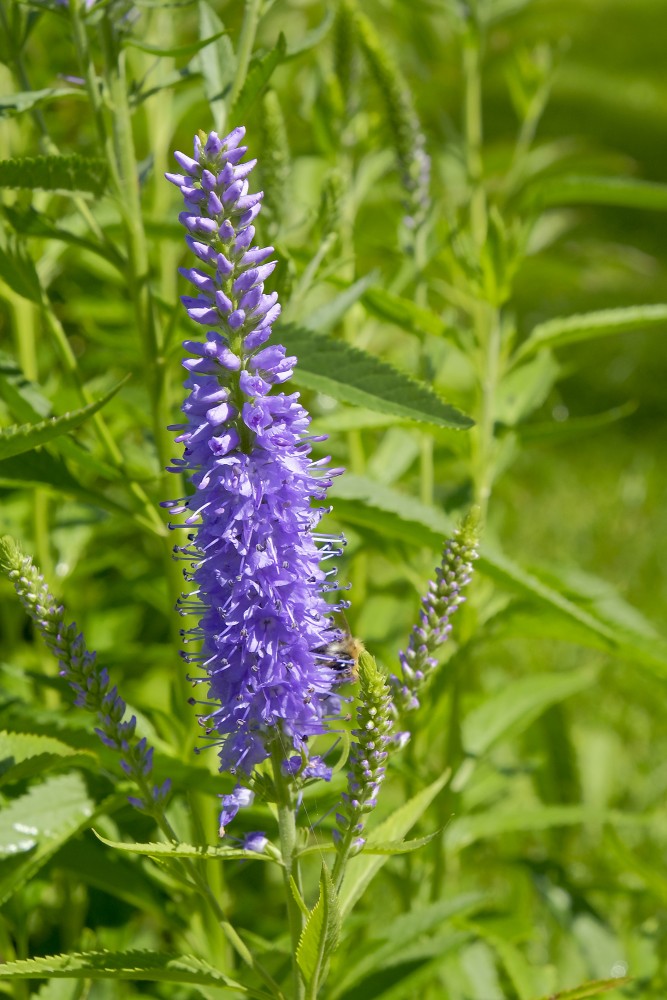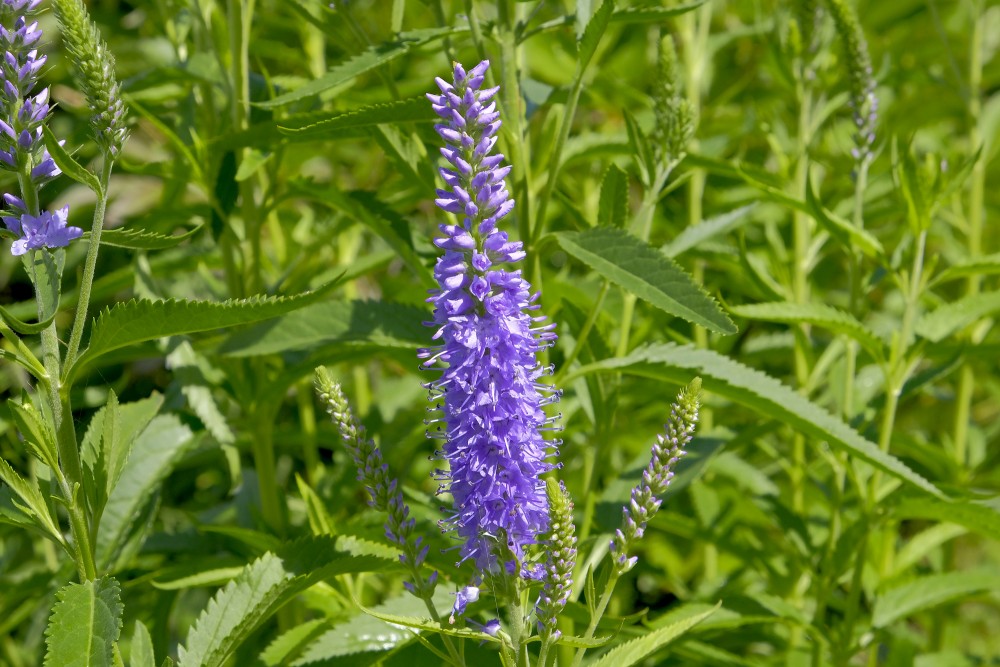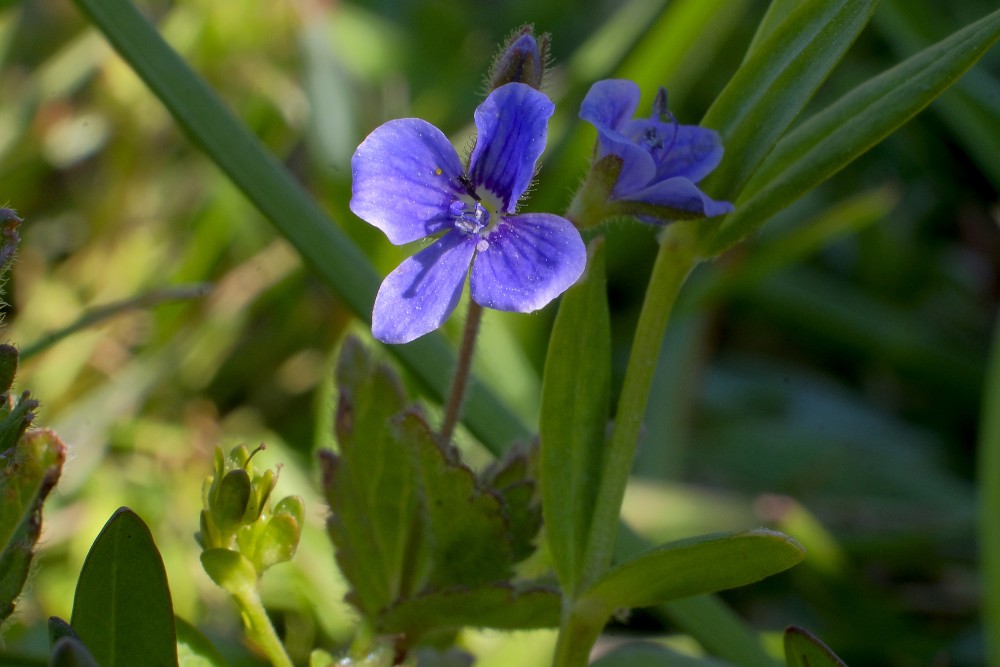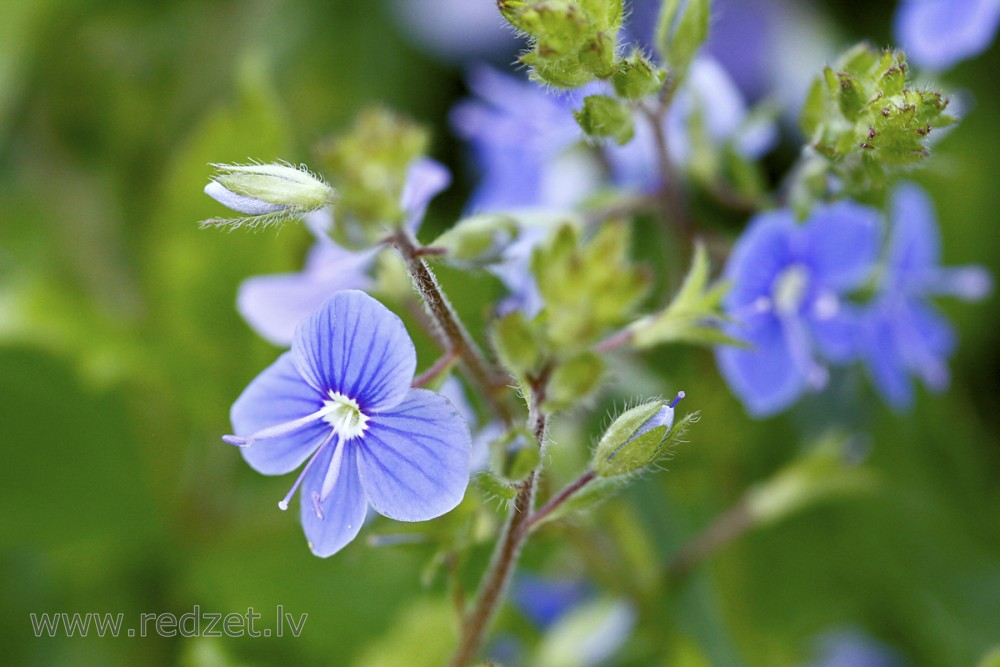Veronica (plant)
Veronica is the largest genus in the flowering plant family Plantaginaceae, with about 500 species; it was formerly classified in the family Scrophulariaceae. Common names include speedwell, bird's eye, and gypsyweed.
Taxonomy for this genus is currently being reanalysed, with the genus Hebe and the related Australasian genera Derwentia, Detzneria, Chionohebe, Heliohebe, Leonohebe and Parahebe now included by many botanists.[1][2] Monophyly of the genus is supported by nuclear ribosomal internal transcribed spacer (ITS) and cpDNA.
The taxa of the genus are herbaceous annuals or perennials, and also subshrubs, shrubs or small trees if Hebe is included. Most of the species are from the temperate Northern Hemisphere, though with some species from the Southern Hemisphere; Hebe is mostly from New Zealand.
| Veronica | |
| Kingdom: | Plantae |
| Clade: | Angiosperms |
| Clade: | Eudicots |
| Clade: | Asterids |
| Order: | Lamiales |
| Family: | Plantaginaceae |
| Tribe: | Veroniceae |
| Genus: | Veronica |
Etymology
The genus name Veronica used in binomial nomenclature was chosen by Carl Linnaeus based on preexisting common usage of the name veronica in many European languages for plants in this group. Such use in English is attested as early as 1572. The name probably reflects a connection with Saint Veronica, whose Latin name is ultimately derived from Greek, Berenice.
Uses
Food and medicine
Veronica americana is edible and nutritious, as are most species in the genus Veronica, and is reported to have a flavor similar to watercress. Native Americans used Veronica species as an expectorant tea to alleviate bronchial congestion associated with asthma and allergies. The plant can be confused with skullcap and other members of the mint family. Members of the mint family have square sided stems, and Veronica species have rounded stems.
Veronica sp. herb has been used in the traditional Austrian medicine internally (as tea) for treatment of disorders of the nervous system, respiratory tract, cardiovascular system, and metabolism.
Ground cover
Several Veronica species and cultivars are cultivated for use as ground cover.
As weeds
Several species of speedwell are sometimes considered weeds in lawns. Some of the more common of these are Persian speedwell (V. persica), creeping speedwell (V. filiformis), corn speedwell (V. arvensis), germander speedwell (V. chamaedrys), and ivy-leaved speedwell (V. hederifolia). It is often difficult to tell one species from another. There are five to seven species of speedwell in Michigan alone that are easily confused.
Ecology
Species of Veronica are used as food plants by the larvae of some species of Lepidoptera, including the grizzled skipper.
An annual life history is known to have evolved separately several times within the genus, with up to 10% of the genus now having an annual life cycle. An annual life cycle, and associated morphological traits, is an adaptation thought to have developed in response to an extremely arid or generally unpredictable environment, and may persist in Veronica due to a historic concentration and radiation of members of the genus in and from the climatically volatile Balkan Peninsula.
en.wikipedia.org




















